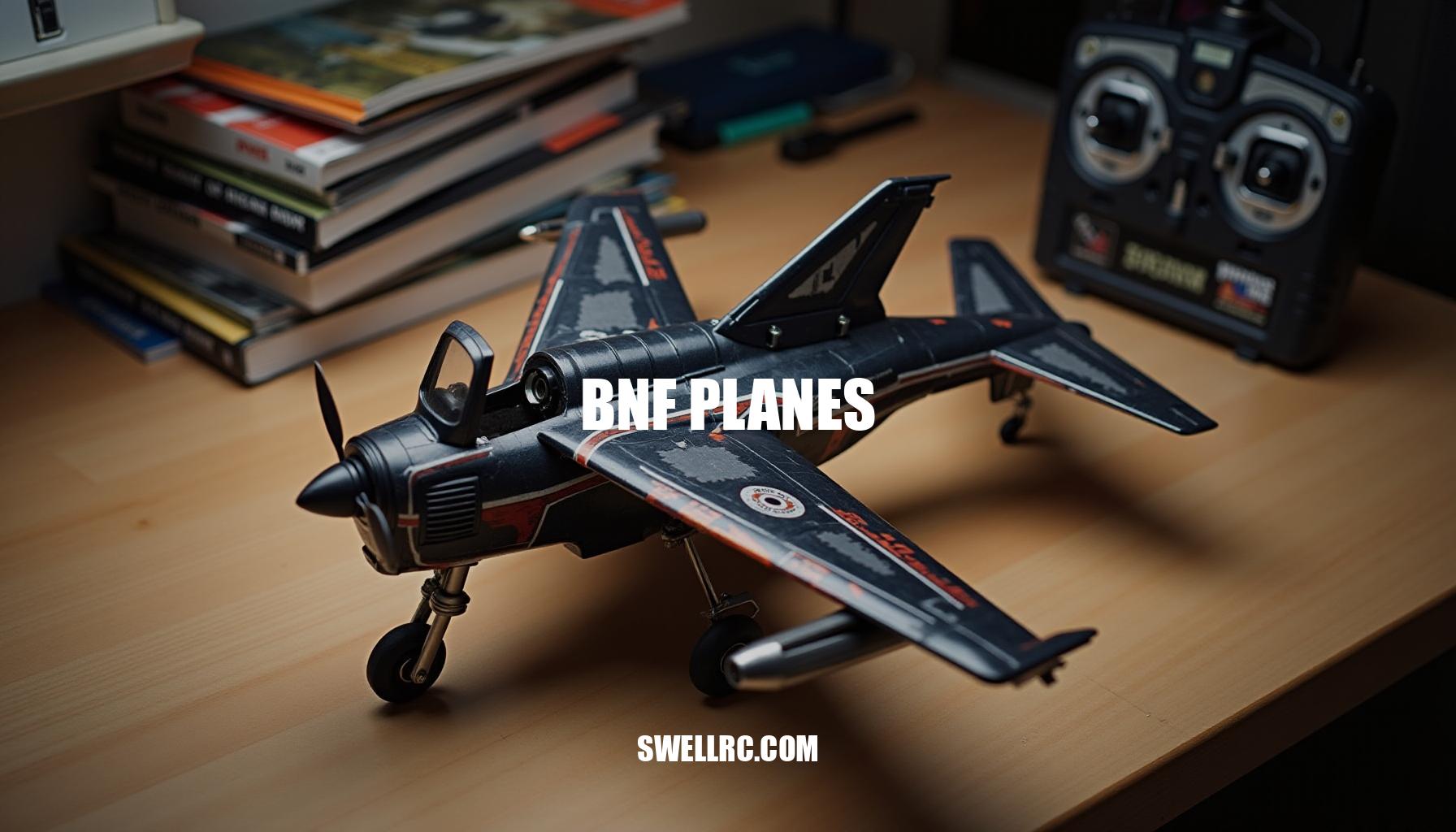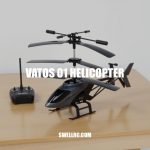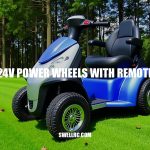The Ultimate Guide to BNF Planes: Revolutionizing RC Flying
After countless hours spent wrestling with the nitty-gritty setup of early RC planes, I finally discovered the game-changing ease of Bind-N-Fly aircraft. These pre-assembled beauties come with a receiver already installed; all you have to do is bind them to your compatible transmitter and take off — no fuss, just flying. Brands like Dynam planes offer an approachable gateway into the world of radio-controlled airplanes for beginners, while those craving higher performance can explore specialized options like F3A models from experts such as Nexa.
In this guide, I’ll share a straightforward framework for choosing the perfect BNF aircraft tailored to your skill level, along with essential maintenance and upgrade tips I’ve picked up through hands-on testing in the exciting realm of electric RC planes and model aviation.
What Are BNF Planes and How Do They Work?
What does BNF mean in RC planes? BNF stands for Bind-N-Fly, a popular way to get your RC plane ready to soar quickly and easily. With a BNF plane, the receiver is pre-installed, so all you need to do is bind it to a compatible radio transmitter and you’re ready to fly. This setup is perfect for hobbyists who already own an RC transmitter or want to skip the hassle of installing receivers themselves.
The bind process for a BNF plane is straightforward and can be done in a few simple steps:
- Set the transmitter to the correct protocol (like DSMX or DSM2) and create a new model memory to store your settings.
- Power the plane in bind mode, usually by holding a bind button while plugging in the battery or flipping a switch.
- Initiate bind on your transmitter (often by pressing a bind button).
- Confirm successful bind by watching for LED indicators on the receiver or transmitter that signal connection.
- Verify control directions, then set sub-trims along with dual rates and exponential to fine-tune flight responsiveness.
- Perform range and failsafe checks to ensure reliable control and safety during flight.
The benefits of BNF planes, especially those from trusted brands like Horizon Hobby BNF planes, include minimal assembly, consistent factory setup, saved time, and easier maintenance — since the receiver is professionally installed. This means you spend less time in the workshop and more time enjoying the sky.
To understand where BNF fits among other common options, here’s a PNP vs BNF comparison along with RTF (Ready-To-Fly), covering what’s included, transmitter needs, assembly levels, pros, and best use cases:
| Type | What’s Included | Receiver Included? | Transmitter Required? | Assembly Level | Pros | Best For |
|---|---|---|---|---|---|---|
| PNP (Plug-N-Play) | Airframe, motor, ESC, servos | No | Yes | Intermediate (install receiver, battery, prop) | Flexible transmitter choice; good learning experience | Enthusiasts who want custom setup; matches many vintage-style World Models RC planes |
| BNF (Bind-N-Fly) | Airframe, motor, ESC, servos, receiver pre-installed | Yes | Yes | Basic (bind receiver, install battery, prop) | Minimal assembly, tested setup, faster to fly | Pilots with compatible transmitter; want quick setup |
| RTF (Ready-To-Fly) | Everything (airframe, electronics, transmitter, battery, charger) | Yes | No (included) | Almost none (charge battery, go fly!) | Very beginner-friendly; all-in-one convenience | Complete beginners; want easiest entry into RC flying |
In summary, if you already own a compatible radio and want to spend less time setting up, BNF is an excellent choice. For those who prefer customizing or are learning by doing, PNP offers more assembly but greater flexibility. RTF caters perfectly to newcomers looking to start flying right out of the box.
Each suits different pilot needs and experience levels.
Choosing the Right BNF Plane for Your Skill Level
Matching your airframe and electronics to your skill level significantly shortens the learning curve and helps prevent crashes, making your RC flying experience both enjoyable and rewarding. Choosing the right combination ensures you’re flying an aircraft that complements your abilities—whether you’re just starting out or looking to perform advanced maneuvers.
Beginner
For those new to electric RC planes, forgiving trainers and high-wing designs with built-in stabilization are ideal. These models often feature short takeoff and landing distances and are made from durable EPO foam that can withstand rough landings. When considering how to choose the right BNF aircraft as a novice, seek out models with full-range radios that include model memory and built-in stabilization modes to aid in control and reduce the chance of crashes.
Are BNF planes good for beginners? Absolutely—many beginner trainer BNF planes provide excellent value and simplicity.
- Durable EPO foam construction
- High-wing, stable designs with stabilization
- Short takeoff/landing capability
- Full-range radio with model memory and stabilization modes
Intermediate
As you gain confidence, sport and warbird BNF models make excellent next steps. These types reward smoother control inputs and allow you to experiment with basic aerobatics. Look for balanced, well-finished options such as Nexa RC planes—a brand known for quality and reliability.
At this level, a computer radio with adjustable rates, exponential settings (expo), timers, and telemetry capabilities enhances the flying experience and fine-tunes control responsiveness.
- Sport and warbird BNF models (e.g., Nexa RC planes)
- Reward smoother inputs and basic aerobatics
- Computer radio with adjustable rates/expo, timers, telemetry
Expert
Experts should consider purpose-built aerobatic setups featuring precise control surfaces to perform crisp lines and repeatable aerobatic sequences. F3A pattern plane kits are perfect for pilots ready to take on advanced challenges in electric RC planes. Such pilots benefit from radios offering advanced programming, including multiple flight modes, customizable mixes, and throttle curves.
High-resolution gimbals and premium receivers with robust failsafe systems become essential to maintain control during precise aerobatics.
- Purpose-built aerobatic planes (e.g., F3A pattern plane kits)
- Precise control surfaces for crisp aerobatics
- Advanced programming (flight modes, mixes, throttle curves)
- High-resolution gimbals and quality receivers with robust failsafe
When exploring the world of RC flying, the right RC transmitters and receivers can significantly affect performance and safety across all skill levels. Remember to level up gradually and focus on short, intentional flights. Taking time to jot post-flight notes will help track progress and pinpoint areas for improvement, making your journey with electric RC planes more enjoyable and crash-free.
Amazing BNF Models That Blew Me Away
Flying the B-52 bomber RC plane was an unforgettable experience in scale multi-engine drama. After hours of circuits, the rumble of its multiple brushless motors underlined the sheer power needed to keep this giant airborne. I was genuinely surprised how well it handled crosswinds, thanks to its robust airframe and meticulous engineering, allowing for steady knife-edge tracking that stunned me with its precision given the plane’s enormous wingspan.
The Boeing 747 RC plane truly showcased exceptional airliner poise and engineering detail. Its smooth, stable flight impressed me immediately, with subtle adjustments to throttle and control surfaces revealing the finesse required to maintain cruise altitude and approach patterns. The brushed-up brushless motors delivered the necessary thrust while keeping weight optimally managed, perfectly simulating real commercial flying dynamics.
Indoors, the F3P RC planes excelled with feather-light precision and nimble aerobatics. Their compact design and ultra-lightweight frames gave me unmatched responsiveness, perfect for rapid rolls, stalls, and intricate maneuvers in tight quarters. It’s no surprise these are considered among the best BNF planes for aerobatics, as their brushless motors provide silky power delivery with minimal noise – a huge advantage in indoor RC flying.
Flipping to heritage aesthetics, models like the Great Planes lineup brought a nostalgic charm combined with reliable performance. Their classic designs handled consistently well in moderate wind conditions, offering a delightful balance of stability and control. I especially appreciated the durable brushless setup that kept them both lightweight and resilient, a bonus for hobbyists seeking realistic scale RC airplanes without sacrificing ease of flight.
For outright competition-grade precision, the F3A pattern planes for sale epitomize the pinnacle of electric RC planes designed for aerobatics experts. Flying these, I marveled at their razor-sharp control surfaces and impeccable weight distribution—perfectly tailored to execute demanding patterns with consistency. Powered by high-quality brushless motors and packed with lightweight batteries, these models excel in flight times that support intensive practice sessions, truly setting the benchmark for expert pilots.
| Model/Category | Wingspan | Motor Type (Brushless size) | AUW / Weight | Battery | Typical Flight Time | Difficulty | Best For |
|---|---|---|---|---|---|---|---|
| B-52 Bomber RC Plane | 2000 mm | Brushless 2215-1400KV (4 motors) | 1800 g | 3S 2200 mAh LiPo | 8–10 minutes | Intermediate | Scale, Multi-engine Drama |
| Boeing 747 RC Plane | 1350 mm | Brushless 2208-1800KV (4 motors) | 1350 g | 3S 1800 mAh LiPo | 7–9 minutes | Intermediate | Scale, Electric RC Planes |
| F3P RC Planes | 450–600 mm | Brushless 1104-2800KV (1 motor) | 120–150 g | 2S 300–450 mAh LiPo | 5–7 minutes | Expert | Indoor RC Flying, Aerobatics |
| Great Planes Models | 1200–1400 mm | Brushless 2212-1400KV (1 motor) | 900–1100 g | 3S 1500–1800 mAh LiPo | 8–12 minutes | Beginner to Intermediate | Heritage, Scale RC Airplanes |
| F3A Pattern Planes | 1500 mm | Brushless 2826-2200KV (1 motor) | 1000–1100 g | 3S 1800 mAh LiPo | 8–10 minutes | Expert | Competition Precision, Aerobatics |
BNF Plane Maintenance, Upgrades, and Customization
When it comes to RC plane maintenance, especially for BNF (Bind-N-Fly) models, a practical, field-ready checklist ensures safety and performance before, after, and during periodic intervals. Before each flight, verify the battery voltage to prevent power loss; check control surface free-movement for responsiveness; ensure all fasteners are secure; confirm prop/adapter tightness to avoid in-flight failures; perform a range check for reliable radio control; and verify gyro orientation for stable flight behavior. After landing, record battery storage voltage to maximize battery lifecycle; inspect airframe for cracks that could compromise integrity; measure motor/ESC temperatures to prevent overheating issues; and check gear alignment to maintain smooth operation.
Periodic tasks include assessing servo horn slop to minimize play; inspecting linkages for wear; lubricating or replacing bearings; and performing necessary firmware updates to keep electronics current.
When upgrading BNF planes, consider safe upgrade ideas with simple rules of thumb. Altering props can trade thrust and efficiency; larger props generally increase thrust but may reduce efficiency and stress the motor. When swapping brushless motors or ESCs, calculate current and wattage requirements precisely to prevent component failure—oversizing can strain batteries and wiring.
Lighter wheels benefit grass operations by reducing rolling resistance, while upgrading servo torque and speed enhances aerobatic precision and response. Strengthening airframe components, like reinforcing spars and hinge lines, improves durability during aggressive maneuvers.
However, be mindful of boundaries that can void warranties. Over-volting ESCs beyond manufacturer specs, exceeding recommended prop load limits, or undertaking significant structural modifications may risk permanent damage and void support. To mitigate these risks, test all changes incrementally, meticulously recording outcomes and conducting controlled flights to evaluate performance improvements versus potential stress points.
For aspirational progression, advanced aerobatic tuning inspired by an F3A RC plane offers a roadmap. Starting with a stock BNF model, enthusiasts can gradually implement measured upgrades and refined maintenance to evolve their aircraft towards customized, competition-grade performance.
Remember, smarter battery care, vigilant maintenance, and thoughtful, measured upgrades multiply both the lifespan and capabilities of any BNF plane. By respecting operational limits and embracing incremental improvement, you ensure each flight is safer, smoother, and more rewarding.
Conclusion — Why BNF Is the Future of RC Flying
Bind-N-Fly aircraft represent a true revolution in RC flying, drastically minimizing setup pain and standardizing quality so you can focus on what truly matters—spending more time flying rather than wrenching. Switching to Horizon Hobby BNF planes reignited my passion for model aviation, accelerating my skill growth as I embraced their plug-and-play ease and dependable performance. Perfectly accessible for beginners, these electric RC planes offer an impressive performance ceiling for seasoned pilots; as your confidence soars, you can naturally transition into advanced aerobatics and precision disciplines like F3A.
Looking ahead, the future of RC flying is brighter than ever.
Innovations in radio technology, flight stabilization systems, and lightweight materials are continuously redefining what’s possible in the sky. I invite you to explore a BNF aircraft that suits your current skill level while leaving ample room to pursue tomorrow’s ambitious goals—because with Bind-N-Fly, your next great flight is just a bind away.
Frequently Asked Questions
- What is a BNF plane and how does it work?
A BNF (Bind‑N‑Fly) plane is pre‑assembled with a receiver already installed. You bind it to a compatible transmitter, confirm controls and failsafe, and you’re ready to fly—usually just add a charged battery and prop if required. - Do you need a special transmitter for BNF models?
You need a transmitter that matches the receiver protocol in the plane (for example, DSMX for many Horizon Hobby/E‑flite BNFs). A full‑range, computer radio with model memory, adjustable rates, and expo is recommended. - Are BNF planes suitable for beginners?
Yes—especially trainer BNFs with gyro stabilization and forgiving airframes. They reduce assembly and setup time, so beginners can focus on takeoffs, landings, and basic orientation. - Which brands make the best BNF planes?
Horizon Hobby’s E‑flite and HobbyZone are well‑known for true BNF models. The “best” choice depends on your goals—trainers for beginners, sport/aerobatic for intermediates, and precision aerobatic options for experts. - How do BNF planes compare to Ready-To-Fly RC planes?
RTF includes a transmitter in the box and is the fastest to the field. BNF requires you to supply a compatible transmitter, but offers better radio quality, reuse across fleets, and deeper programming flexibility. - Can I upgrade or modify a BNF aircraft?
Yes. Common upgrades include props, motors, ESCs, servos, landing gear, and reinforcement. Keep weight and center of gravity in check, verify current draw, and note that heavy mods can void warranties.



